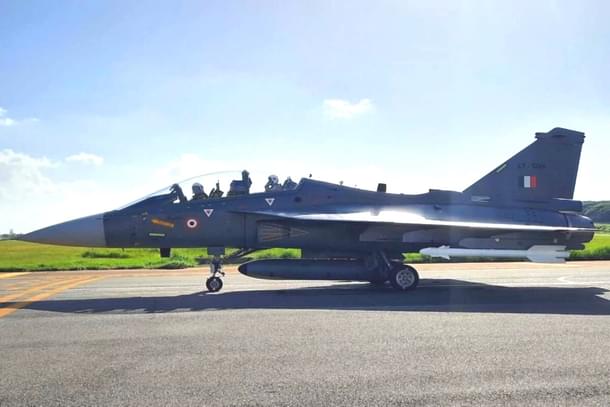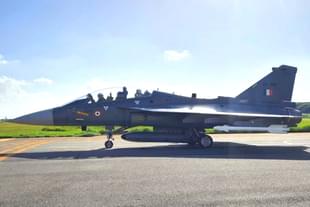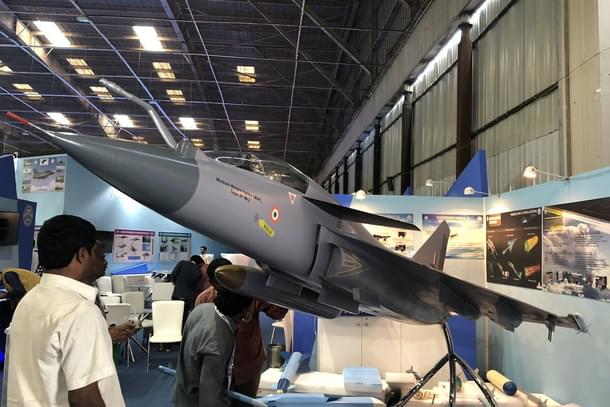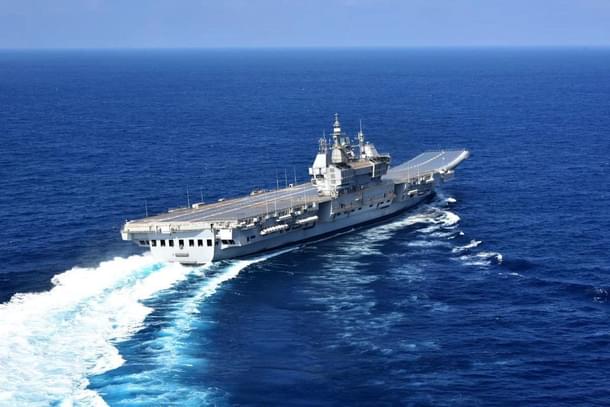Defence
India's Major Weapons Projects Remain Vulnerable To US Engines And Goodwill
Ujjwal Shrotryia
Dec 21, 2023, 04:58 PM | Updated 09:30 PM IST
Save & read from anywhere!
Bookmark stories for easy access on any device or the Swarajya app.


Just a month ago (on 29 November), the United States Justice Department accused two Indian nationals of plotting to kill Khalistani terrorists and a US citizen, Gurupatwant Singh Pannu.
One accused, according to the US Justice Department, works for India’s external intelligence agency, the Research and Analysis Wing (R&AW).
The recent revelation by the United States, coinciding with diplomatic tensions between India and Canada, has raised concerns. The US support for individuals like Pannu, known for making threats against Indian citizens, particularly the recent threat to attack the Indian parliament, has led to doubts about the reliability of the US as a dependable ally for supplying weapons.
US behaviour from the past does not help its case, either.
Its blocking of the Global Positioning System signal for the Indian Army, in the Kargil war of 1999, serves as a reminder.
The US also blocked the development of fly-by-wire (FBW) system (in 1998) for the Tejas programme, after India conducted Pokhran nuclear tests, significantly delaying the development of the indigenous fighter.
Eventually, India was able to develop the FBW system without any foreign help.
India has known this for a long time and is actively working on developing a defense-industrial complex of its own to build as much equipment as possible indigenously.
However, many subsystems and components of these Made-in-India weapon systems come from various suppliers worldwide, including some US-based companies — jet engines from General Electric, for instance.

Hindustan Aeronautics Limited (HAL) made Tejas Mk-1 jet, of which 220 jets are in various stages of delivery and deployment, uses GE’s F-404 jet engines.
Moreover, under-development Tejas Mk-2, 120 units of which are initiallly planned, fifth generation stealth Advanced Medium Combat Aircraft (AMCA-minimum 36 units), and Twin-Engine Deck-Based Fighter fighter for the Navy (57 units), all of these will use the GE F-414 engine.
The US has even allowed unprecedented technology transfer for these GE F-414 engines to India — close to 80 per cent.
The Indian Navy, too, is dependent on US-built sub-systems.
India’s first indigenously-built aircraft carrier, INS Vikrant, and the three Shivalik class frigates, uses GE’s LM-2500 marine gas-turbines.

Even the seven under construction Nilgiri class frigates and the future Next-Generation Destroyer will use the same LM-2500 gas-turbine engines.
And this is apart from the other equipments directly imported from the US — IAF's C-130J and C-17 Globemaster-III cargo aircraft, CH-47F Chinooks, AH-64E Apaches, and the Indian Navy's MH-60R anti-submarine warfare (ASW) helicopters, P-8I Poseidon ASW aircraft, and MQ-9B drones.
Consequently, the success and progress of these projects are vulnerable to the prevailing political ideologies of the US government during that specific period, or more precisely, to their whims and fancies.
The United States has a track record of wielding defense exports as a strategic lever, as seen in its recent denial of F-35 fighters to Turkey after the country started cozying up to Russia.
While executing a similar manoeuvre with a nation of India's magnitude and influence poses significant challenges and potential repercussions, one cannot dismiss the possibility of the US resorting to such tactics.
Pulling off a stunt like this with a country of India's size and stature would be difficult and could have grave consequences. However, it cannot be put past the US to engage in such actions when it fails to take India's concerns seriously, even on matters seemingly straightforward, such as the case of Pannu.
Staff Writer at Swarajya. Writes on Indian Military and Defence.




